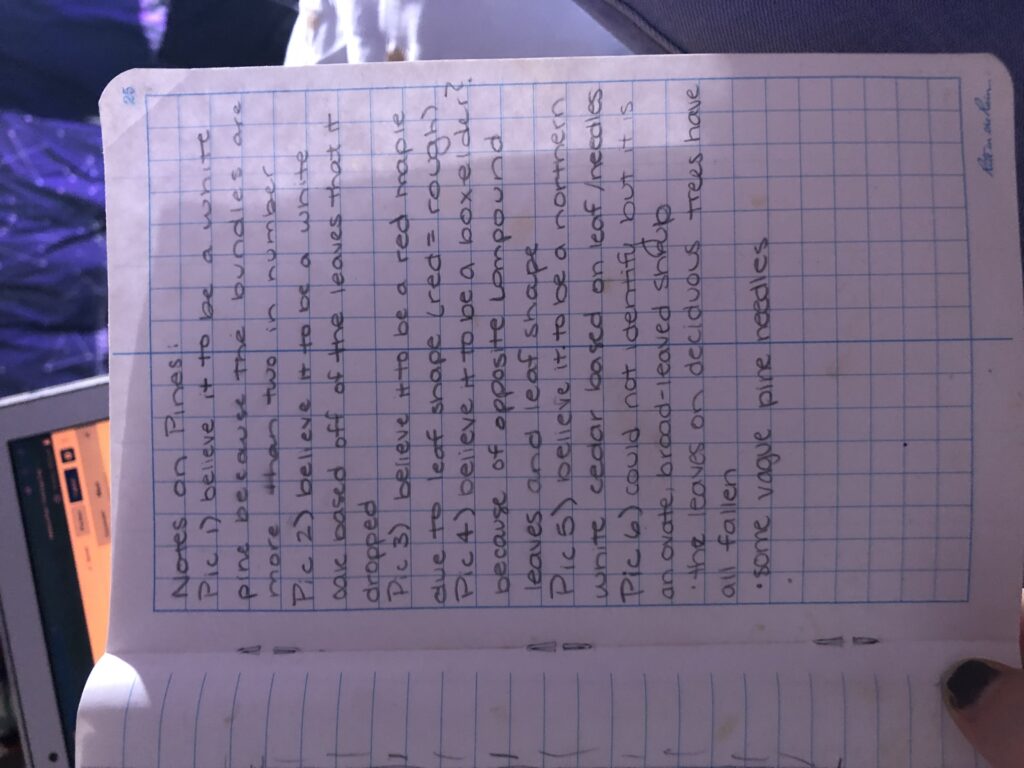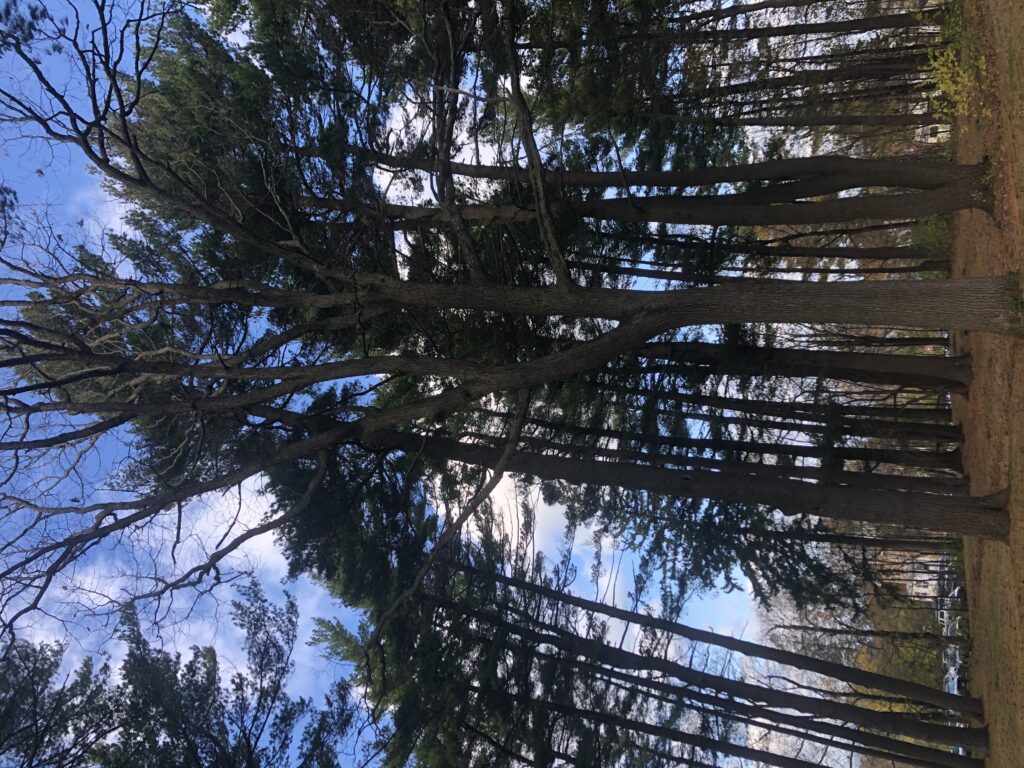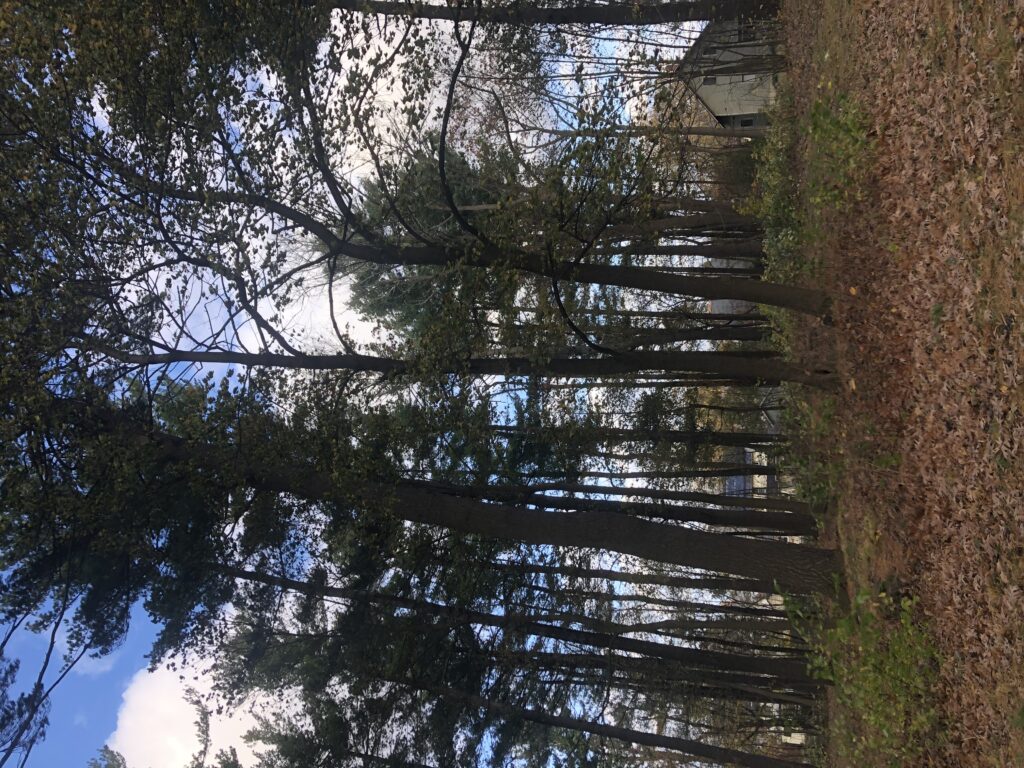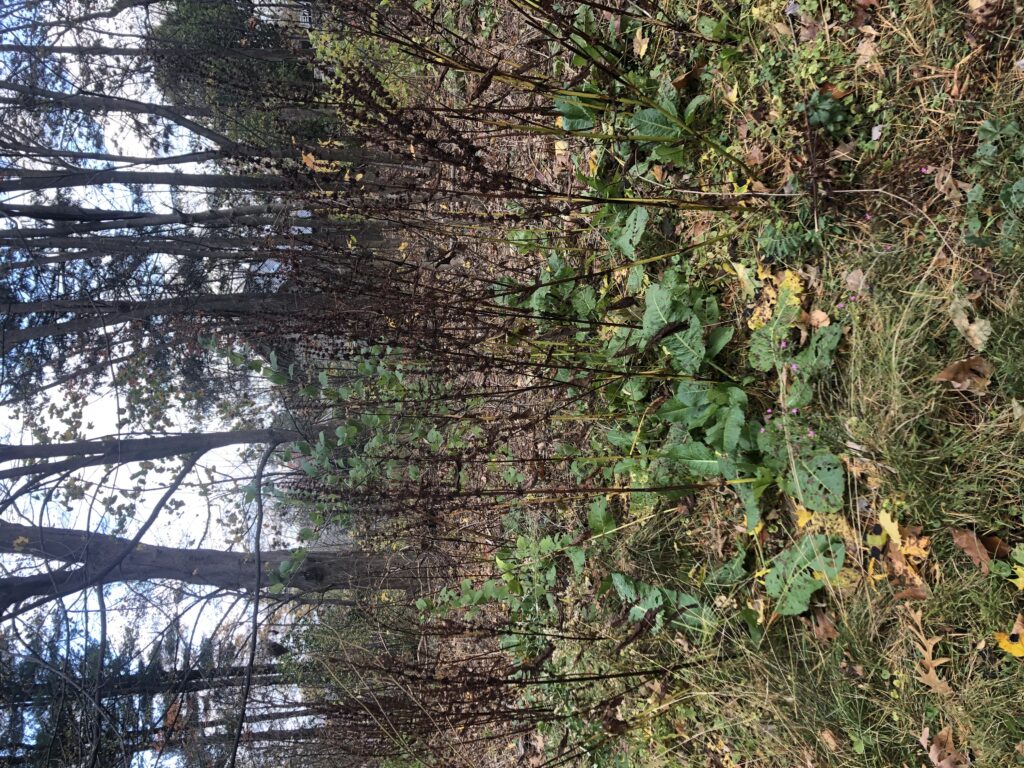







Changes in Vegetation
Since the last visit to Redstone Pines many of the leaves have fallen. The last time I came approximately a third of the leaves were still on the deciduous trees. This past visit, nearly all of the leaves on the deciduous trees had fallen. There was also noticeably more pine needles located on top of the soil.
Topography and Soil
As previously mentioned, there is a large change in topography the further east along the plot that you move. The terrain gets steep along the area with the most rocks (see the map). The soil has some organic matter in the form of pine needles and leaf litter. Due to the pine needles, it is likely that the soil of Redstone Pines is slightly acidic.
